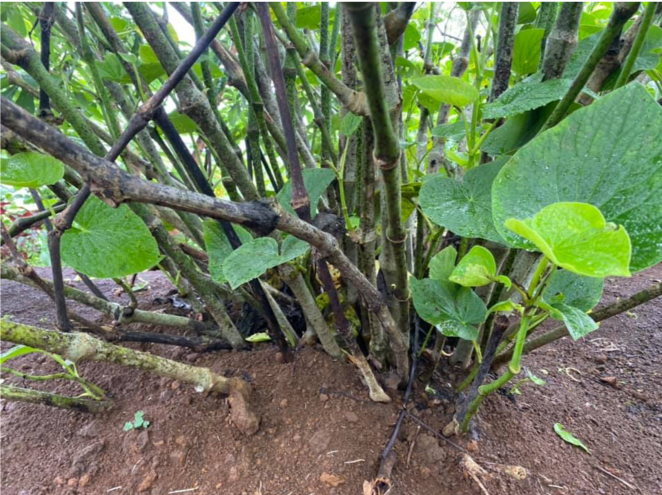Kava Quality Begins at the Farm
March 2, 2022 11:21 pm | Posted in Business News | Share now TwitterFacebook

Vanuatu’s Kava Industry continues to rocket as many lead farmers today on the main productive islands of Santo, Pentecost, Malekula, Maewo and Epi continue to increase kava production.
Kava is an important crop to Vanuatu for a range of cultural, social and economic purposes and it’s Vanuatu’s green gold.
The Department of Agriculture and Rural Development’s (DARD) Kava Officer, Peter Kwari, said kava is an important cash crop that generates more income in the country, benefiting 75 to 80% of Vanuatu’s population living in the rural areas.
“Today, kava is gradually shifting away from traditional use to an economic beverage where most countries in the Pacific are generating more money out of it,” DARD Kava officer Kwari said.
“It is essential that the farmers who are always at the frontline, alongside with the buyers and exporters, must ensure to produce good quality kava at all times to meet the requirements of domestic and export markets.
“Producing good quality kava begins at the farm, complying with the process of dried kava and green kava before marketing point.
“There are certain steps to follow in order to produce top quality kava such as farmers ensuring kava plants are 3-5 years before harvesting, after harvesting, wash kava with clean water, use a clean knife to separate kava parts and well cleaned before cutting into chips. Kava chips should be dried on a well ventilated area or surface.
“Farmers can use transparent plastics to build solar drier above the soil, free from animals.
“Once kava is well dried, the chips should be white in colour and can be easily crack when break open.
“Farmers must ensure that the kava chips are dried up, well stored before buyers can purchase kava.
“Vanuatu kava exports have long been considered an important part of the kava industry.”
The DARD is encouraging local farmers to plant the noble kava varieties that are already selling at overseas markets.
Vanuatu has more than a 100 kava varieties schedule in the Kava Act and the DARD has categorized it into four categories.; Noble Kava, Medicinal Kava, Tudei Kava — also call Two Day and Wild Kava.
Vanuatu farmers are well aware of these noble kava varieties.
Kava Officer Kwari added that there are ongoing challenges faced by the kava industry.
“Despite the challenges such as the high cost of transport and poor road conditions and poor access to production sites and markets, COVID-19 pandemic, poor ship handling, early harvesting, two day kava, distance to the markets, no proper storage facility and poor quality, the income generated from kava has contributed directly to the livelihoods of farmers as an important commercial crop,” he said.
“Farmers should respect each other and the buyers and exporters to maintain overseas market.”
The DARD is planning to implement priority activities this year to address some of the challenges encountered by local kava farmers.
“DARD will be assisting farmers to build proper dryer facilities to ensure farmers produce good quality kava for export.
“DARD will be working in collaboration with appropriate authorities to organize trainings to train farmers to produce good quality kava.
“When we talk about good quality kava, it all started at the farm. If a farmer does not plant a noble kava variety and is able to export that variety, the farmer is already tarnishing the quality of kava.
“So farmers should be very honest about their work at the farm, growing noble varieties of kava so that we can protect Vanuatu kava market.”
Kwari concluded, “I would like to advice farmers to treat kava as a beverage drink thus hygiene is paramount and farmers should consider that what they are producing will be consumed by many people at large.”
The DARD encourage farmers to use the most appropriate agricultural farming systems that will boost growth rate and ensure kava is free from any diseases such as, Dieback disease.
While kava takes five years to harvest, today farmers are more advanced in their knowledge of kava plantation management and understanding of the changing weather pattern to mitigate climate change impacts (high rainfall, drought and pest and disease) and managing their crops well to ensure that their returns from kava are consistent throughout the year.










